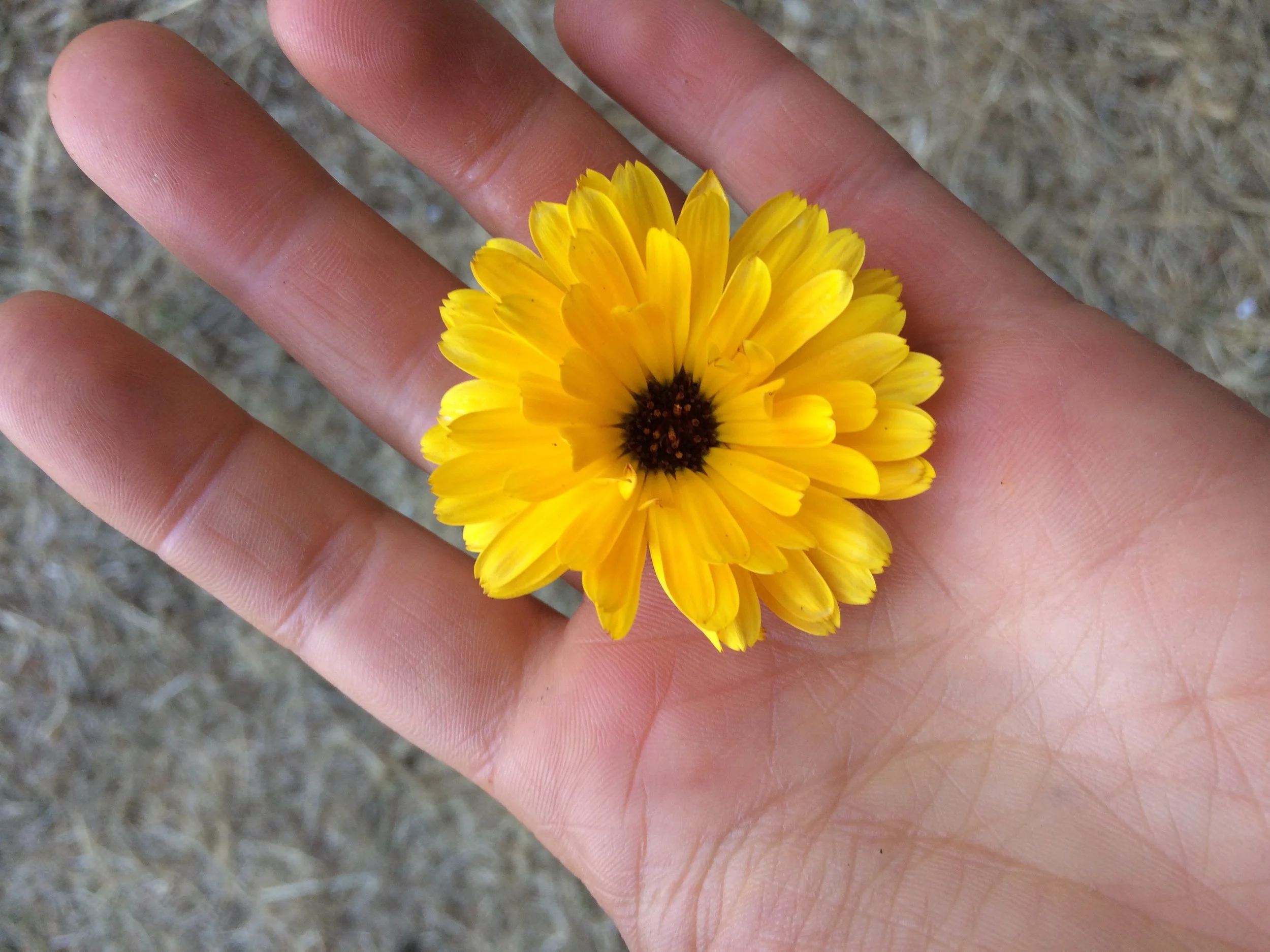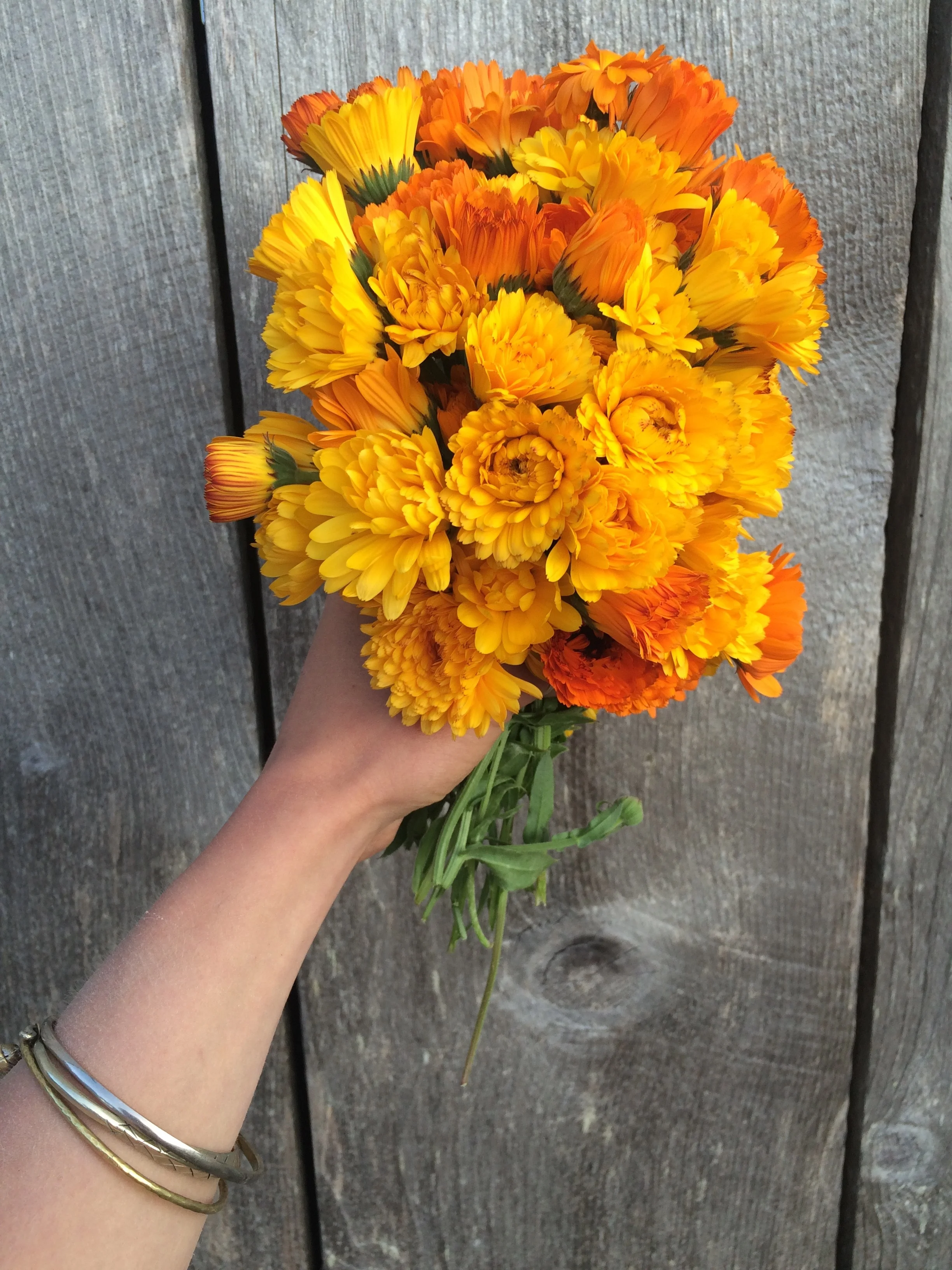How to Make a Herbal Salve: Calendula and Lavender
Calendula! Also known as common marigold. This herb is like a little sunflower. It always brings a smile to my face. Calendula is not only a sunny little spark of brightness, it also has important medicinal properties: it is a demulcent (soothing and moisturizing), a vulnerary (helps cuts and wounds heal), anti-inflammatory, and antimicrobial. Altogether these properties make it an ideal herb to apply to the skin for any kind of scrape, irritation, chafe, cut, minor wound, sting, burn, or rash. Calendula salve is one of my staples and part of my initiation in discovering that: herbs! ...they actually do work!
I was inspired to make this salve while on Salt Spring Island because I was finding myself frequently in blackberry bushes or scrambling along the rocks in the intertidal zone, and often covered in scrapes and cuts. Calendula salve is a good all in one - it helps prevent infection and also will hasten healing time. Calendula grows in many a vegetable garden on the island. Gardeners like it because it helps to repel pests. I connected with a few people who were willing to do a trade with me, and I exchanged some edible seaweed I had previously harvested and dried in order gather from their gardens. One of the women who gave me some flowers had a horse farm, and grows a huge amount of calendula to make salves for her horses.
Making a salve is quite a simple process and surprisingly easy to do. Most basically, you put your herbs in a jar and cover with oil, allow to steep for a few weeks, and then heat it gently with beeswax so it becomes a balm rather than an oil. I have added lavender here which is partially just because it smells nice, but also because it adds further antimicrobial and anti-inflammatory benefit. I have also heard that lavender helps with scars, though I couldn't find a reputable source to back that one up.
Ingredients and materials:
Calendula flowers
Lavender flowers (about 5 stalks for every cup of calendula petals) or lavender oil
Olive oil
Beeswax (at a 1:4 or 1:5 ratio to olive oil)
Mason jar for infusing
Small tins or jars for salve
Instructions:
Gather calendula flowers, or buy dried flowers from a store. If purchasing flowers, they should be a bright yellow or orange, not pale and faded. Reserve half your flowers aside. Pull the petals off the flower heads you are using and place in the mason jar. You can also use the whole flower, but I prefer just the petals so as to make the most concentrated salve possible. Muddle petals lightly (use your fingers or a spoon to stir and mush them a little so they start to release their oils). Add lavender flowers. Pour olive oil over top until petals are completely covered (if they are exposed to the air they will start to ferment). Let salve sit for a couple weeks and the oil changes colour.
If you are using fresh flowers hang the second half of the batch to dry and use later. Calendula salves are typically made from a double infusion; the oil is infused with flower petals and then strained, and then the same oil is infused a second time with a new set of petals. After you have infused the oil for a couple weeks, strain and add new flower petals, then steep for another two weeks before moving on to adding the beeswax. This is my preferred method, though it is slightly more complicated, because it makes the salve more potent.
Strain the oil to remove the calendula petals and lavender. When you are ready to make the salve, gently heat over a double boiler and add grated beeswax, stirring until beeswax melts. If you have a cup of oil, you want to use about 1/4 cup of beeswax. If you are using lavender oil, add the oil at this stage. Add about 20 drops at a time, smelling as you go to decide how strong you want the lavender scent to be.
Pour mixture into clean tins or small jars. Allow to cool and harden. Use frequently!
Options:
If you want immediate results, you can make your salve in a double boiler or crockpot. Heat the oil and calendula flowers to a low heat for 3 hours. Instant oil! This is probably less ideal because more of the volatile oils are lost through a heat preparation. I haven't done any comparison of how relatively effective this method is, but it certainly still works!
You can increase or decrease the amount of beeswax you use depending on whether you want a harder or softer salve. Put a few spoons in the freezer, and when you want to test the consistency, dip a cold spoon into your salve - it will harden on the spoon. Alternatively, pour a little on a spoon and place the whole thing in the freezer until it hardens.
Disclaimer: Information can be empowering, but we all have unique health profiles and needs. Health-related information contained in this post is intended to be general in nature and should not be used as a substitute for a visit with a Naturopathic or other doctor.



